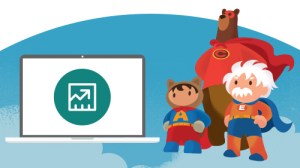Closing B2B sales is tougher than ever. Business buyers have a proliferation of information and resources at hand to educate themselves about the purchases they’re making. That means B2B sales teams need to get smarter about how they influence and win over business buyers. Here are four useful B2B sales techniques that can help you build a powerful sales strategy in a competitive marketplace:
1. Transactional B2B sales
Transactional selling is the simplest B2B sales technique. In fact, it’s the way most people think about sales: identify a prospect, pitch them your product, and close the sale. The focus is on the short-term, usually on selling a single product — for example, in real estate. In transactional B2B sales, the prospect is aware of their needs, knows the solution, and is simply looking for an offering that best matches their requirements.
To grow your transactional B2B revenue, understanding customer needs and expanding sales through digital channels are crucial. In the latest State of Commerce report, B2B buyers are turning to digital channels now more than ever. The share of revenue coming from digital channels for B2B sellers has increased from 28% to 40% in two years. Revenue is expected to increase to 52% two years from now. Transactional selling is not just only about closing sales fast, but also providing more transactional options to close deals efficiently.
2. Solution B2B sales
Solution selling involves knowing the customer’s needs or problems and offering solutions in the form of products or services. It’s about pitching a value proposition. So, instead of simply selling the benefits or features of your offerings, you focus on the end state of the sale — how will the buyer’s organisation improve by adopting your product or service. Solution B2B sales have slightly longer purchase cycles but typically lead to deals with a better ROI and the potential for multiple repurchases.
To make sure that sales pitches are productive in solution B2B sales, you can’t just rely on experience and intuition. There is a need for data analytics to help boost your sales strategies and create a personalised, insightful solution for different customers. In the State of Connected Customer report, sales personalisation is one of the most important factors that influence B2B transactions. 89% of business buyers said they are more likely to buy if companies demonstrate an understanding of their end goals. With a clear view of the needs of your customers, you can better align your products and services with their goals to create great value.
3. Consultative B2B sales
Consultative selling is similar to solution selling; though, with the former, the buyer is aware of their problems or needs but not very proactive about finding a solution. In consultative B2B sales, the sales representative gains a deep understanding of the buyer’s problems or needs and how to fulfil them. They then advise the buyer about potential solutions, taking on a consultative role that nudges buyers towards making the purchase.
Consultative B2B sales often require the efforts of a sales representative along with a subject matter expert, so that all the buyer’s doubts and questions can be resolved. As this B2B sales method usually features larger ticket sizes, longer purchasing cycles, and a high-touch face-to-face selling environment, trust becomes more important, especially during times of change.
87% of business buyers expect sales representatives to know their business goals and work with them as a trusted advisor. However, only 62% say they generally trust sales representatives. There is still work to do in gaining customer’s trust. But this is a good opportunity for you to build trusted relationships with more personalised and customer-centric sales interactions.
4. Provocative B2B sales
In provocative B2B sales, the customer is not aware of a problem or need they might have. The sales representative executing this sales technique needs to first make the buyer aware of their problem or need, and then pitch their offerings as a solution. Provocative B2B sales are tricky to execute because the sales representative risks patronising or offending the buyer. However, if done well, this method gives the seller a first-mover advantage by offering the buyer solutions to problems they didn’t even know they had — and thus beating the competition to it.
Using data-driven insights to predict your prospect’s needs can help you close deals quicker and improve productivity in provocative B2B sales. As the primary thing being sold is guidance, followed by the product or service as a solution, a sales representative who anticipates customer needs will be able to build trust and elevate buyer satisfaction.
A B2B sales team may need to adopt different sales techniques depending on the buyer they’re interacting with. A CRM software like Salesforce’s Sales Cloud empowers your sales teams with a 360-degree view of prospects and customers. It unifies data from multiple sources on one shared platform, providing sales teams with all the information they need to understand customer needs and determine the best suited B2B sales techniques to deploy in any situation. With commerce, sales, and other data connected, sales representatives are becoming experts in understanding the customer’s past relationship with the company, measuring estimated revenue, and predicting the potential for add-on business.
Learn how to measure and boost productivity, and lead your sales team back to growth.
This post originally appeared on the Salesforce India blog.

























